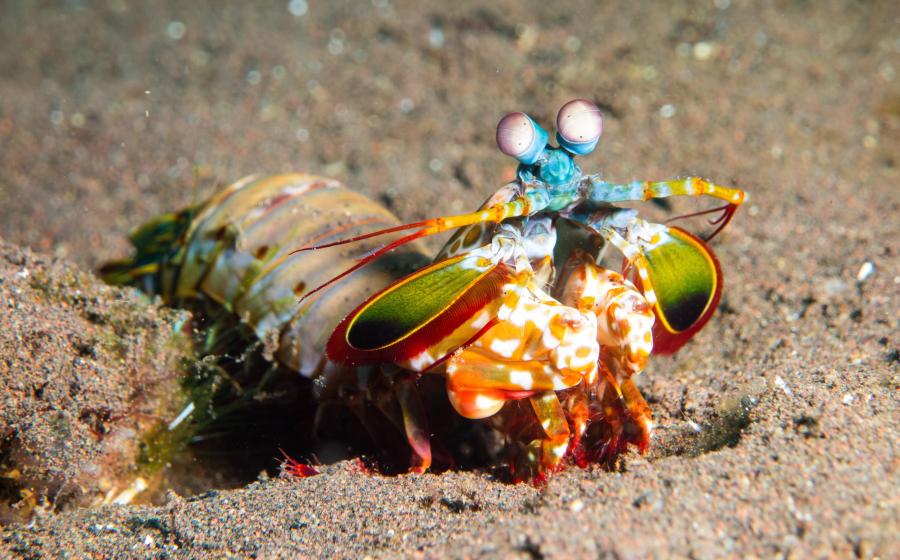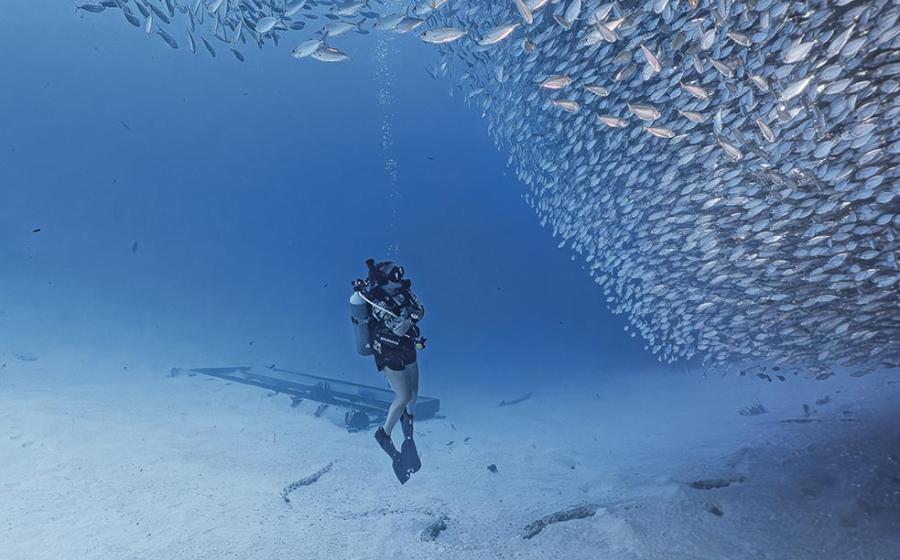Giant Isopods by the Numbers

Giant Isopod
A giant isopod refused to eat for 1,868 days after it was removed from the waters of Baja California.
Cameron Thorp
If the “roly polys” in your garden creeped you out as a child, the giant isopod may not be your new-favorite marine critter. However, if you can get past the tough exterior, this 14-inch crustacean can be quite fascinating.
The giant isopod (Bathynomus giganteus) is found at great depths in most oceans on the globe, where it spends its time scavenging for food on the sea floor. The critter is categorized as a carnivore, and it has adapted to eat just about anything that falls from above – including dead whales, fish and squid. Yet, when food is scarce, the giant isopod can subsist on nothing for extended periods of time.
This isopod’s size comes as a result of a phenomenon known as deep-sea gigantism, which causes animals living at great depths to grow exponentially larger than their shallow-dwelling cousins. The giant squid and giant tubeworm are other examples of the phenomenon.
Just like its land-crawling cousin, the giant isopod is able to roll into a ball when threatened, thanks in large part to its segmented-yet-strong outer shell.
Giant Isopods by the Numbers
1,868
Number of days a giant isopod (Bathynomus giganteus) taken from the waters of Baja California refused to eat at Toba aquarium in Japan before dying. In the sea, giant isopods can live up to four years without eating.
1879
Year that zoologist Alphonse Milne-Edwards — who was devoted to fossil birds — first described the genus Bathynomus.

Price in U.S. dollars of a giant isopod iPhone case, popular with Japanese kids.
14 inches
Length giant isopods can reach; typical isopods measure from a half-inch to just under 2 inches.

Cameron ThorpA giant isopod refused to eat for 1,868 days after it was removed from the waters of Baja California.
If the “roly polys” in your garden creeped you out as a child, the giant isopod may not be your new-favorite marine critter. However, if you can get past the tough exterior, this 14-inch crustacean can be quite fascinating.
The giant isopod (Bathynomus giganteus) is found at great depths in most oceans on the globe, where it spends its time scavenging for food on the sea floor. The critter is categorized as a carnivore, and it has adapted to eat just about anything that falls from above – including dead whales, fish and squid. Yet, when food is scarce, the giant isopod can subsist on nothing for extended periods of time.
This isopod’s size comes as a result of a phenomenon known as deep-sea gigantism, which causes animals living at great depths to grow exponentially larger than their shallow-dwelling cousins. The giant squid and giant tubeworm are other examples of the phenomenon.
Just like its land-crawling cousin, the giant isopod is able to roll into a ball when threatened, thanks in large part to its segmented-yet-strong outer shell.
Giant Isopods by the Numbers
1,868
Number of days a giant isopod (Bathynomus giganteus) taken from the waters of Baja California refused to eat at Toba aquarium in Japan before dying. In the sea, giant isopods can live up to four years without eating.
1879
Year that zoologist Alphonse Milne-Edwards — who was devoted to fossil birds — first described the genus Bathynomus.

Price in U.S. dollars of a giant isopod iPhone case, popular with Japanese kids.
14 inches
Length giant isopods can reach; typical isopods measure from a half-inch to just under 2 inches.










